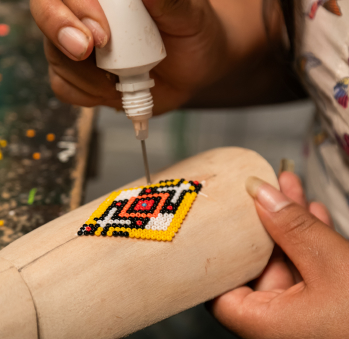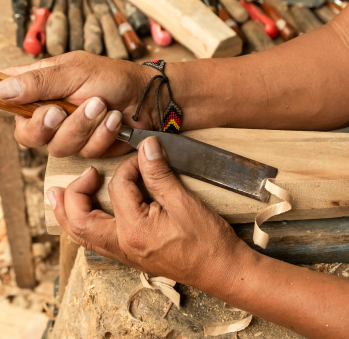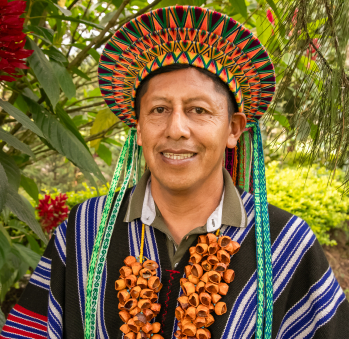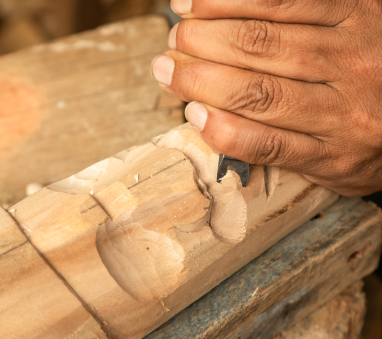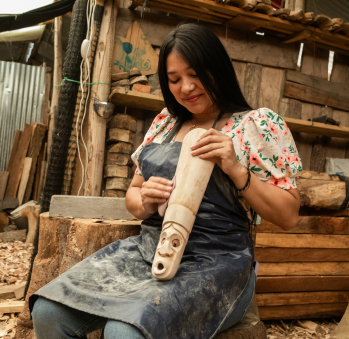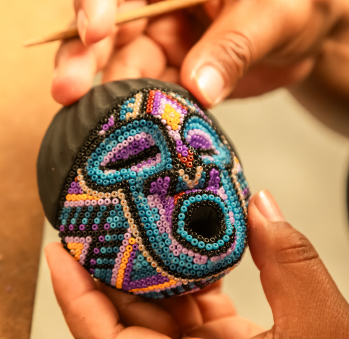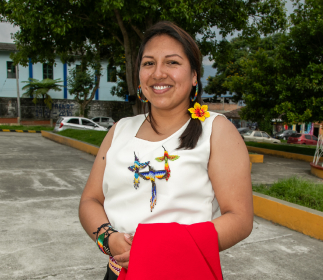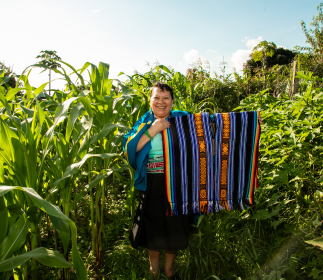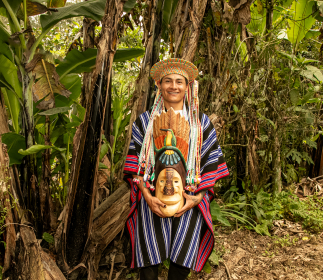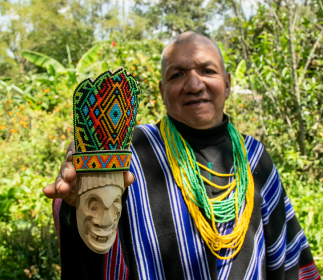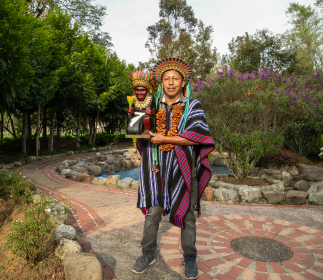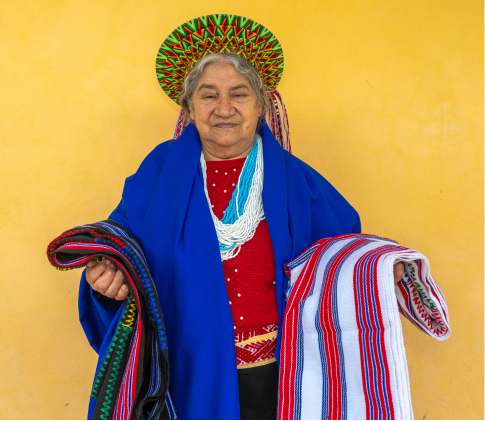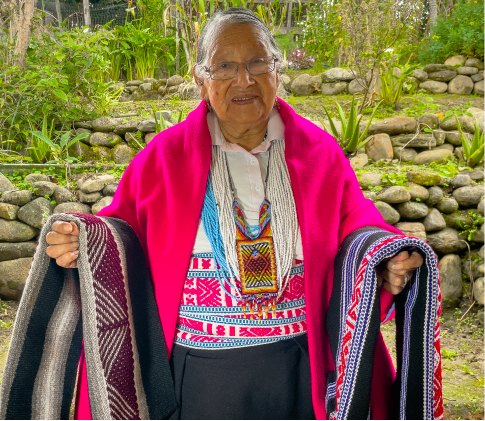Marcelino Chasoy Juagibioy
Workshop: Shinyak
Craft: Trabajo en madera, enchape en chaquira
Trail: Putumayo Route
Location: Sibundoy, Putumayo
For years, Marcelino believed he wasn’t a lucky man. If he planted potatoes, the beans became better priced, and if he went for beans, a frost would come and ruin his harvest. Despite this, he toiled from sunup to sundown, farming the land, the only thing he believed he was good at, and he’d come home so tired that he didn’t even have the energy to peek into what his brothers were up to in the next room. He only discovered that later, when he had nothing left to lose.
He remembers his brother Gerardo insisting him to help them make crafts. His poverty was such that he agreed. That Saturday in which he accepted the invitation, was his last day as a farmer. He was 31 years old, and he recalls resting on Sunday and starting a new life on Monday. One life he had absolutely no idea about. He’s now approaching adulthood in the craft of wood carving, 18 years elevating the Chasoy name, an artisanal surname from the Valle de Sibundoy.
However, the tradition of carving didn’t come from his family. In fact, Gerardo, who had studied engineering at the National University, started by making bracelets at Corferias and then sharing a booth with artisans who saw his eagerness to progress. He sustained himself in Bogotá with his earnings. When he went back to Sibundoy, his hometown in Upper Putumayo, he told his brothers to get into it. They all did, except Marcelino… until he said yes.
He’s aware that his hands were rough, and many times his brother fixed the bracelets he made. Despite how bad he was at it, he started to like this new craft and became interested in learning how to paint as well. As dedicated as he was to the land, he dedicated himself to craftsmanship, and two years after starting, the Chasoys came up with the idea of making wooden masks. They didn’t know how to carve, nor did they know anything about masks beyond what they saw in the annual celebration of the Big Day of their Kamentsá town, but that didn’t stop them from asking until they found someone to teach them the technique. That person was Master Delio Ortega, who spent a week teaching the brothers the basics of the craft. What followed was starting from scratch, as they had no tools at all.
For Marcelino and his brothers, it was the beginning of a long dedication to craftsmanship. Their mother’s kitchen knife was the first tool with which he molded a mask, and the workshop, a small space a few meters from their father’s cornfield, a space they covered with an old, hollowed-out truck tarp. They had to make many mistakes carving willows before they got to where they wanted to be. And they were pioneering in a tradition that today is recognized by the country as the wooden mask craftsmanship of the Upper Putumayo. When they started, there were no references for masks beyond the ceremonial ones of the Matachines and the San Juanes. The traditional ones, the round ones with mocking gestures, as well as those representing nature and yagé journeys that are so popular today, were not common at the time, and it was very difficult to find them and learn how to make them. Many of them, in addition, they had to invent. That’s why these brothers feel they introduced the artisanal world to their town.
Today, Marcelino is proud of the wood storage system he and his brothers developed, one that preserves the willows that fall so easily with the strong winds of the valley, preventing them from having to cut them down. His challenge, moreover, is to portray the tragedy of so many Kamentsá losing their language and customs for decades due to the discrimination of being indigenous. He wants the new generations to understand that what will save them are, precisely, their roots. That’s the reason for his vocation as a teacher. He knows that if someone, like him, who learned after the age of 30, could do it, anyone who wants to learn, can do it as well. He knows it won’t be easy, but for him, nothing has been, so he’ll keep trying until his last days.
Craft
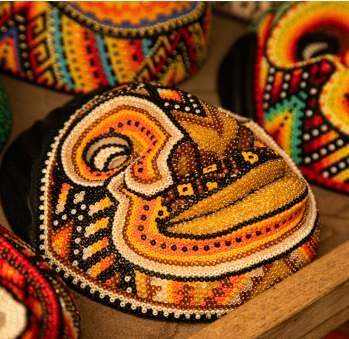
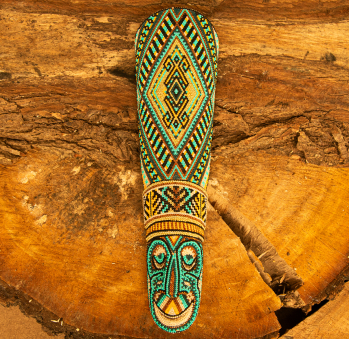

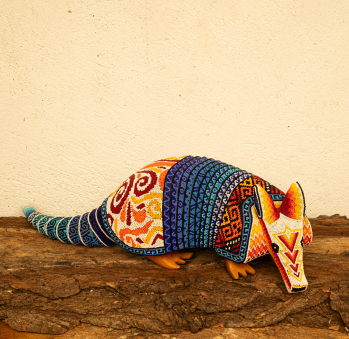
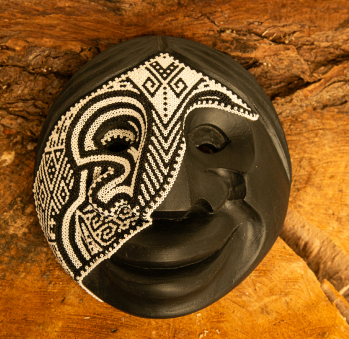
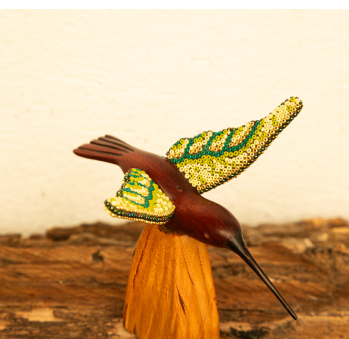






Artisans along the way
Artisans along the way
No puede copiar contenido de esta página









































